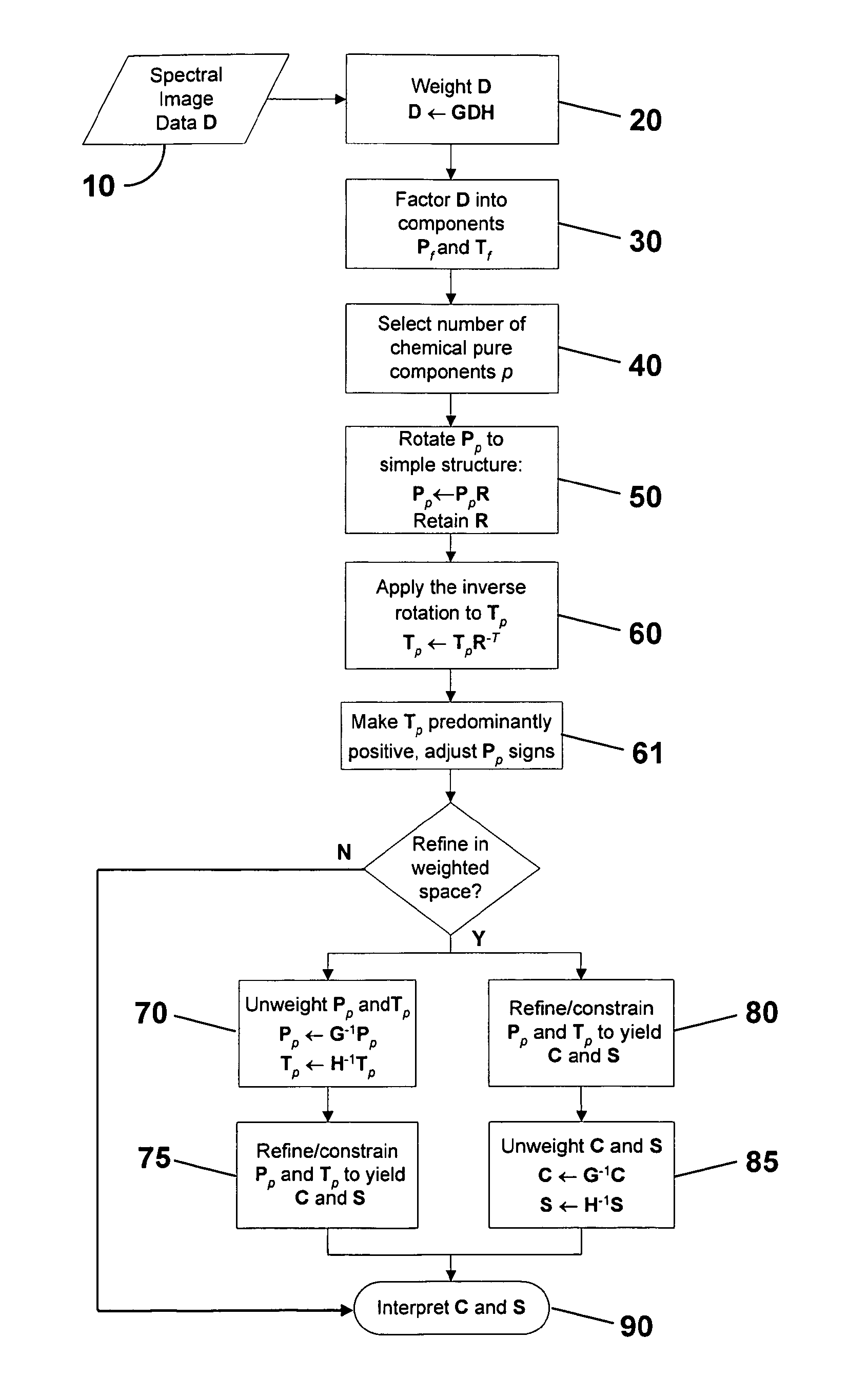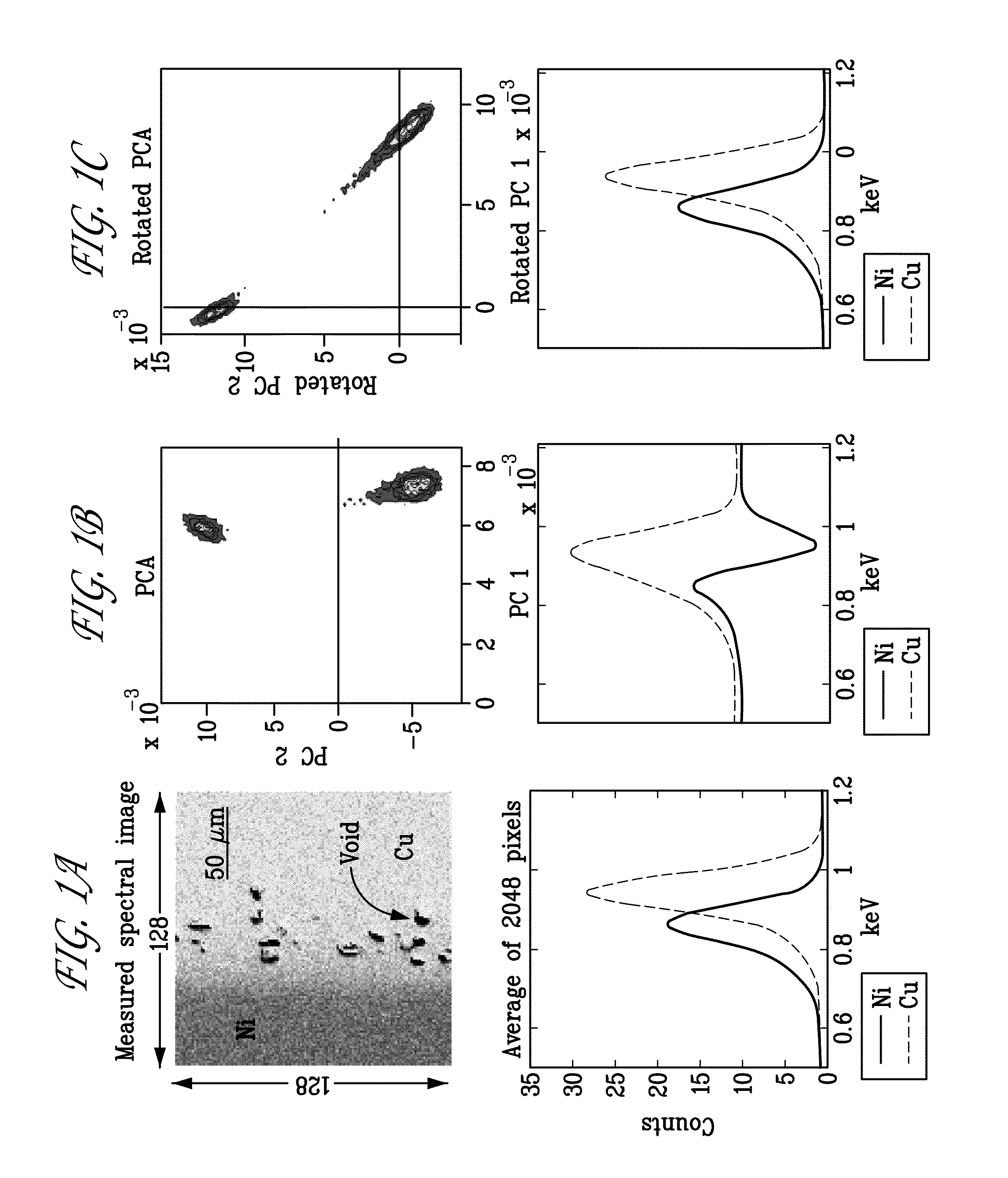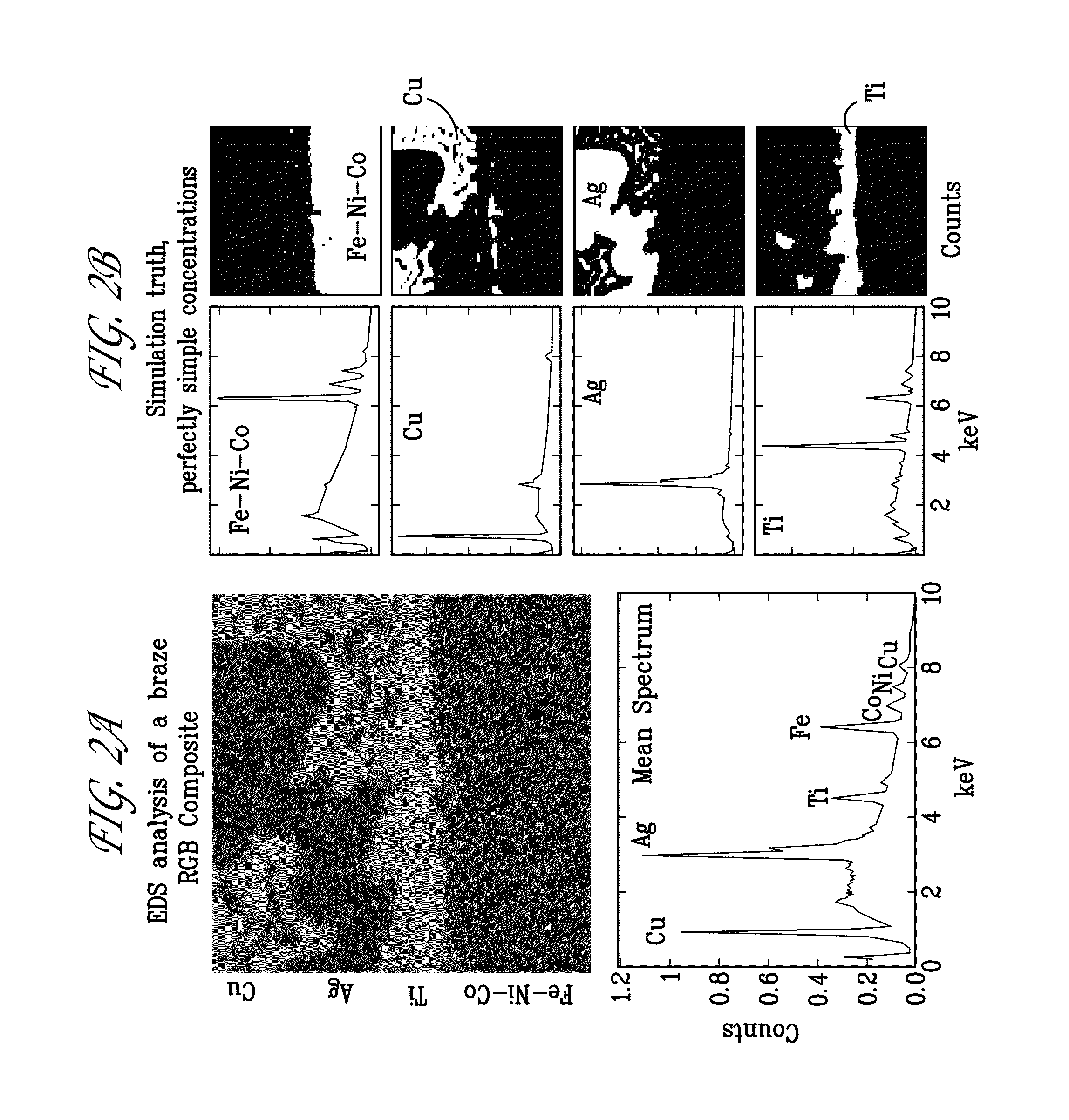Methods for spectral image analysis by exploiting spatial simplicity
a spectral image and spatial simplicity technology, applied in the field of spectral image analysis, can solve the problems of difficult to reduce the vast quantity of raw spectral data to meaningful chemical information, pca factors are abstract and not easily interpreted, etc., and achieve the effect of simple structur
- Summary
- Abstract
- Description
- Claims
- Application Information
AI Technical Summary
Benefits of technology
Problems solved by technology
Method used
Image
Examples
Embodiment Construction
[0028]In general, multivariate spectral analysis for chemical characterization of a sample can include: determining the number of chemical species (pure elements and chemical phases or alloys) that comprise an inhomogeneous mixture being imaged; extracting the spectra of these “pure” components (elements or phases); quantifying the amount or concentration of each component present in the sample; and mapping the spatial distribution of these components across the sample.
[0029]In general, an image can comprise any arbitrary, multidimensional array of points. The image can include a spatial dimension, such as lines, traditional 2D images, or 3D volumes; or a temporal dimension, such as a time series of images. For example, in the case of a gas chromatography / mass spectroscopy (GC / MS) image, the dimension is a separation coordinate. The multivariate image analysis techniques will be described herein in reference to a spatial dimension. However, it is understood that the techniques can b...
PUM
| Property | Measurement | Unit |
|---|---|---|
| spectroscopic imaging system | aaaaa | aaaaa |
| rotation matrix | aaaaa | aaaaa |
| concentration | aaaaa | aaaaa |
Abstract
Description
Claims
Application Information
 Login to View More
Login to View More - R&D
- Intellectual Property
- Life Sciences
- Materials
- Tech Scout
- Unparalleled Data Quality
- Higher Quality Content
- 60% Fewer Hallucinations
Browse by: Latest US Patents, China's latest patents, Technical Efficacy Thesaurus, Application Domain, Technology Topic, Popular Technical Reports.
© 2025 PatSnap. All rights reserved.Legal|Privacy policy|Modern Slavery Act Transparency Statement|Sitemap|About US| Contact US: help@patsnap.com



